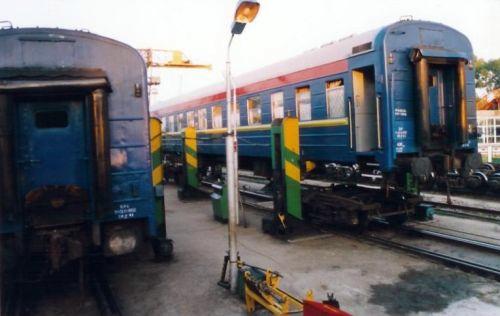The Rails of Inspiration
Dragan, a blogger from the same server, pointed me to the article Changing Climates for Microsoft and Google, Desktops and Webs, with the intention that I should write about the numerous weather and natural phenomena metaphors the author uses to describe the current and future state of the Operating Systems market. There are a lot indeed. There are so many that it is almost poetry. I’m not ready to go into that. But there was something for me as well: an analogy to railways.
First a brief primer on why it’s great to own an operating system. In short, it’s a lot like owning an industrial age railroad. Railways and trains are like operating systems and applications. Operating systems are the rails themselves. Applications are the trains which, of course, run on the rails. In order for trains to travel on a railway, they must match the railway’s gauge. In order for applications to run on operating systems, they must match the OS’s API. If a train doesn’t match a rail’s gauge, or an application doesn’t match an OS’s API — things don’t turn out well.
However, the OS as railways analogy looks smooth and pleasant, in fact it is very rough. The invitation to imagine operating systems as rails and trains as applications is like comparing with roads and cars, veins and blood, frequency and radio shows; as well as shavers and razorblades, trees and leaves in fact anything else in the world that can be seen as something on, over or in something else. The journalist likes the appeal of railways in particular because in the next paragraph he claims Microsoft is a contemporary robber baron:
As the robber barons found out, when a railroad achieves critical mass you make a boatload of money. Better yet, once that track is laid it’s very difficult to move aside. Like any good robber baron, Microsoft would love for Google to compete on the same field where Microsoft owns all the rails and most of the trains.
This analogy works. Bill Gates is a robber baron in the Information age just as Leland Stanford was one in the Industrial Age. And the comparison would work without going into the parallel metaphor of “rails are OSs” and “trains are applications”. I think it leads to the wrong direction.
Notice that the author is talking about computers as railways not about computer networks as railways, the latter is a more popular analogy and not a meaningless one. If we agree to compare computers to railways in order to explain their development, architecture or processes (I personally can’t think of a good example where it would fit), first one would have to admit that in this construction, both rails and trains are computer hardware. Then (maybe), one could proceed to build an argument around it.

In 1987 together with my school mates, I travelled from Moscow to Prague by train. In Brest (on the border of Belorussia and Poland) our train stopped for 6 hours to change its wheel bogie. It is a standard procedure due to a 9 cm width difference between tracks used in Europe and the former Russian Empire. I think if I’d write on software compatibility, hardware compatibility, DVD regional lockout or network architecture, I would not be able to stop myself from making ahalogies to this beautiful process. Railways are very inspiring indeed.
Read on Ruby on Rails in my next post.
[…] Looking at Ruby books I found a perfect place for the analogy with change of the wheels boogie. That picture had to be on the cover of just published guide on “How to translate your […]